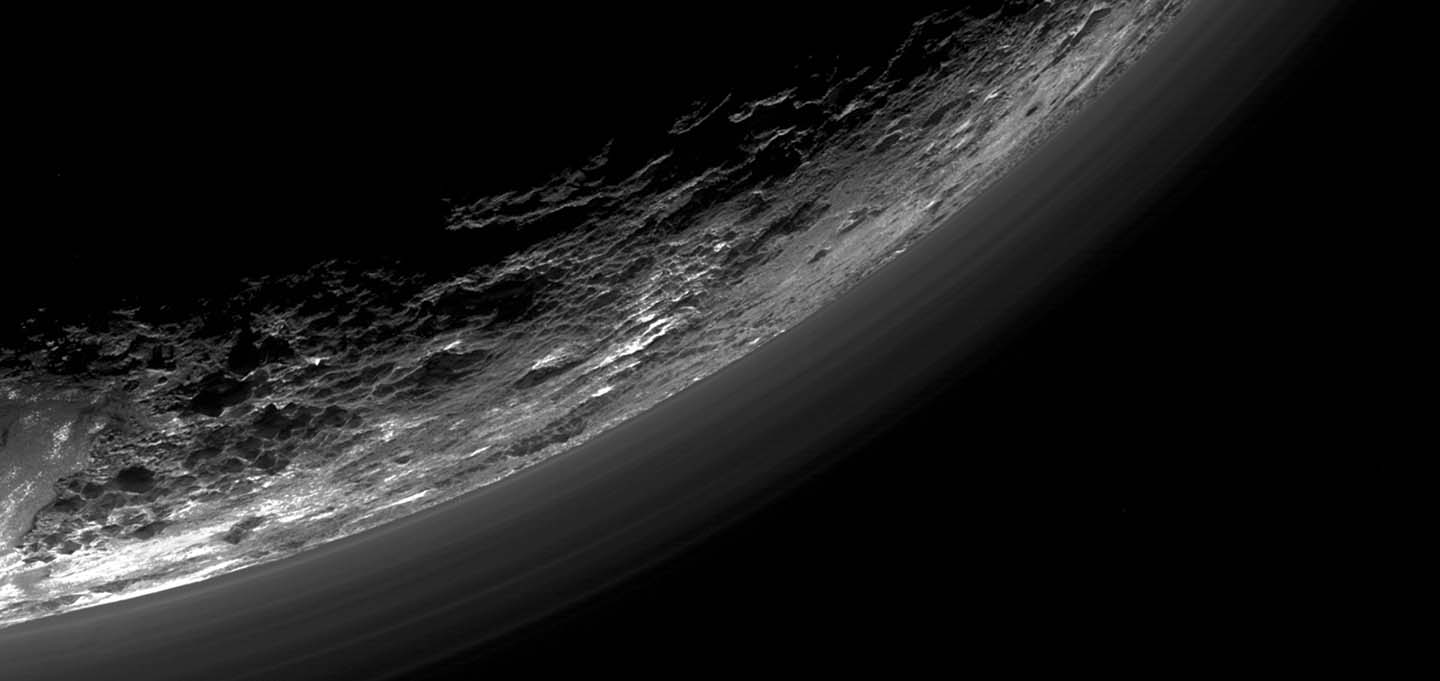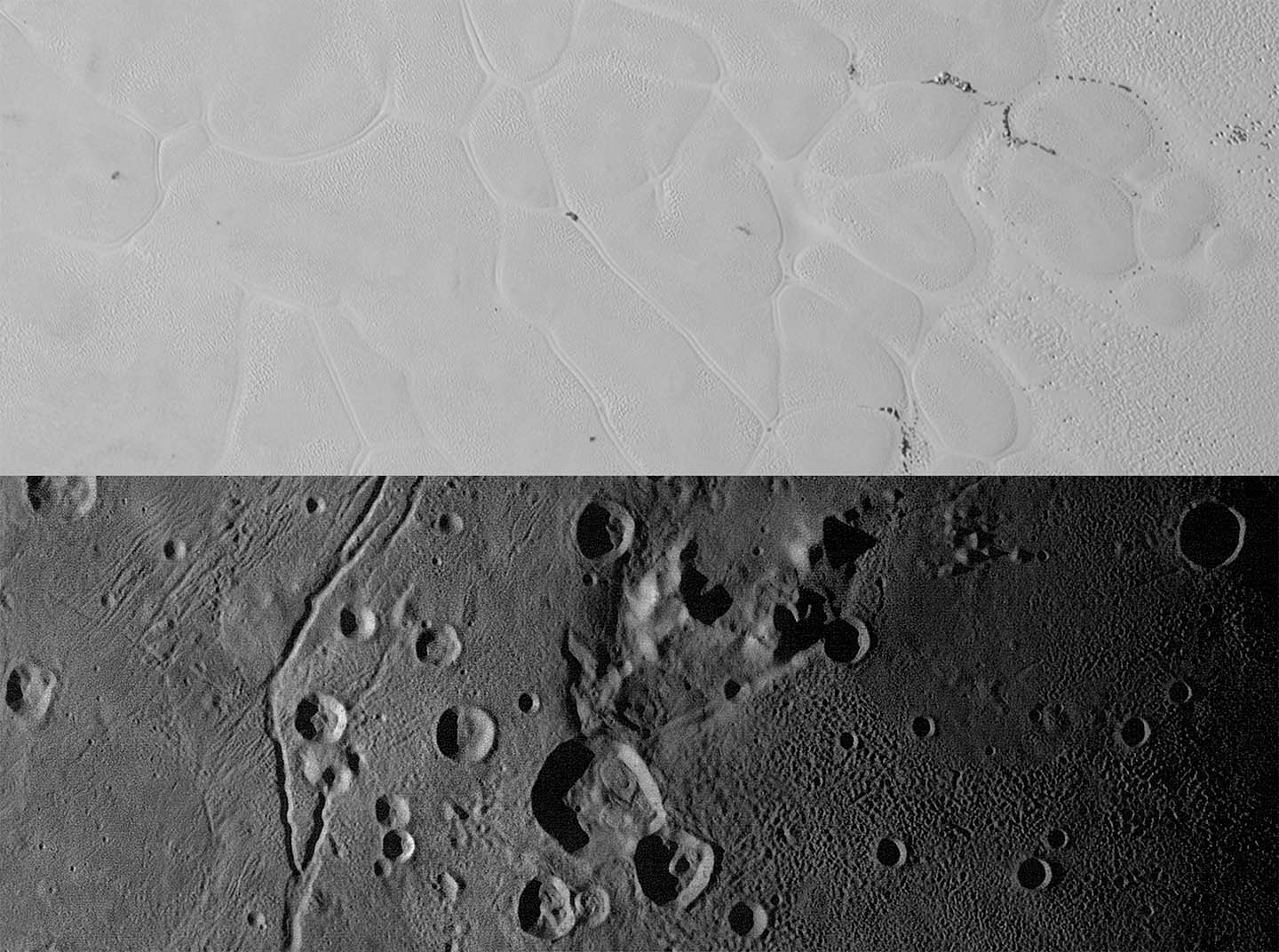Press Release
Research Papers in Science Reveal New Aspects of Pluto and Its Moons
Fri, 03/18/2016 - 13:50
A year ago, Pluto was just a bright speck in the cameras of NASA’s approaching New Horizons spacecraft, not much different than its appearances in telescopes since Clyde Tombaugh discovered the ninth planet in 1930.
But this week, in the journal Science, New Horizons scientists published the first comprehensive set of papers describing results from last summer’s Pluto system flyby. “These five detailed papers completely transform our view of Pluto — revealing the former “astronomer’s planet” to be a real world with diverse and active geology, exotic surface chemistry, a complex atmosphere, puzzling interaction with the sun and an intriguing system of small moons,” said Alan Stern, New Horizons principal investigator from Southwest Research Institute, Boulder, Colorado.
After a 9.5-year, 3-billion-mile journey — launching faster and traveling farther than any spacecraft to reach its primary target — New Horizons zipped by Pluto on July 14, 2015. New Horizons’ seven science instruments collected about 50 gigabits of data on the spacecraft’s digital recorders, most of it coming over nine busy days surrounding the encounter. About half of that data has now been transmitted home — from distances where radio signals at light speed need nearly five hours to reach Earth — with all of it expected back by October.
The first close-up pictures revealed a large heart-shaped feature carved into Pluto’s surface, telling scientists that this “new” type of planet — the largest, brightest and first-explored in the mysterious, distant “third zone” of our solar system known as the Kuiper Belt — would be even more interesting and puzzling than models predicted.
The newly published Science papers bear that out; click here for a list of top results.
“Observing Pluto and Charon up close has caused us to completely reassess thinking on what sort of geological activity can be sustained on isolated planetary bodies in this distant region of the solar system, worlds that formerly had been thought to be relics little changed since the Kuiper Belt’s formation,” said Jeff Moore, from NASA Ames Research Center, California, and lead author of the paper covering geology.


